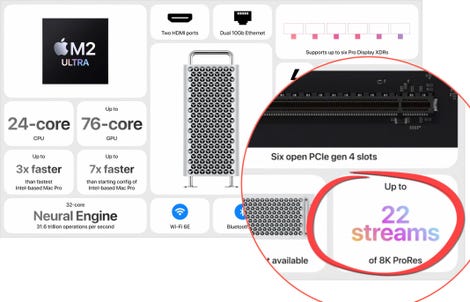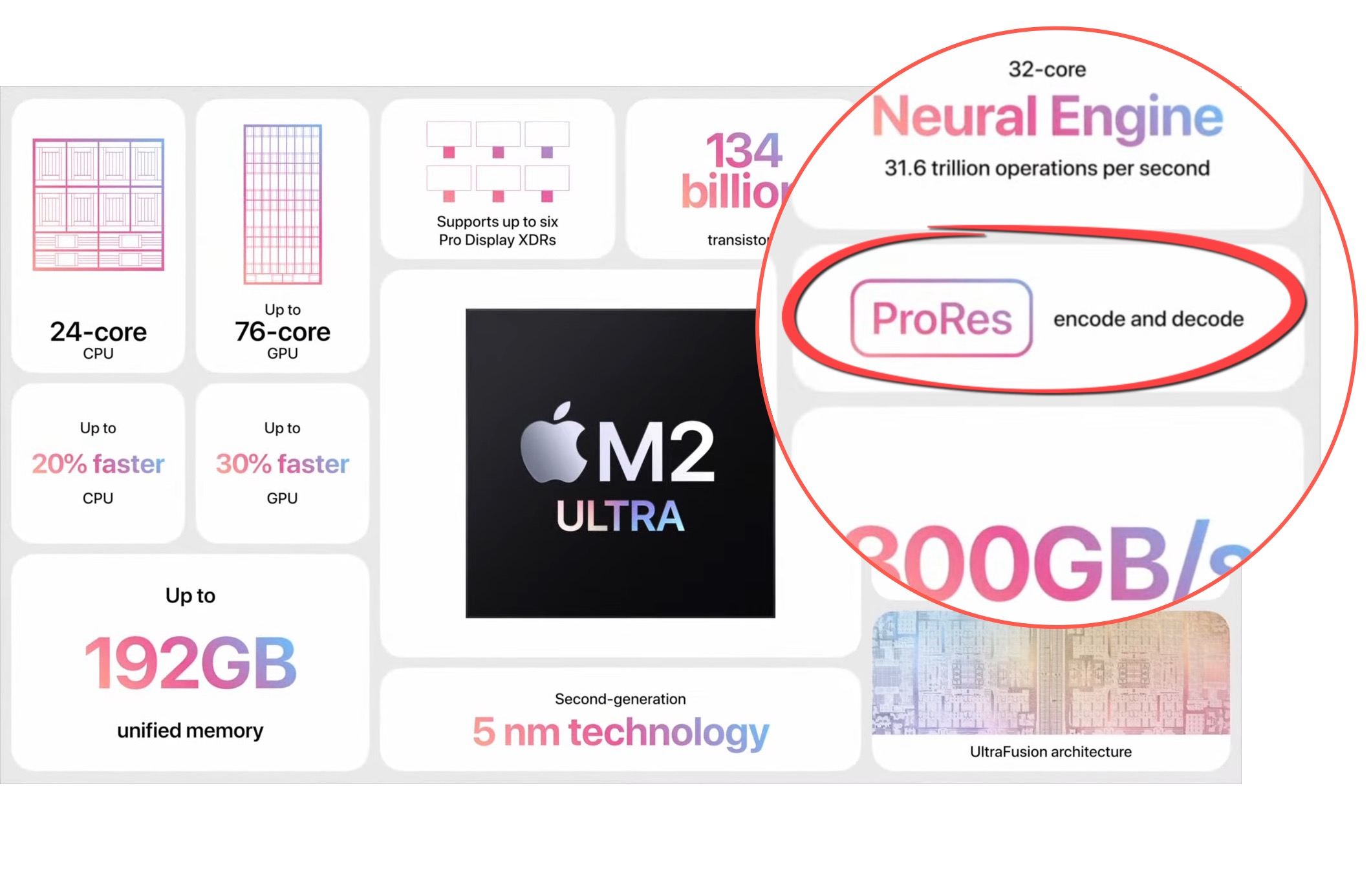The technical sheet of the M2 Ultra. Apple
If you watched Apple’s WWDC 2023 keynote two weeks ago, you probably noticed that Apple mentioned “ProRes” a few times.
For example, the new M2 Ultra chip offers “ProRes encoding and decoding,” while the new Mac Pro can handle “up to 22 ProRes 8K streams.” But what is ProRes and why is Apple talking about it? it as if it were a benchmark to verify or guarantee the efficiency of a system?
Simply put, ProRes is a video codec (short for encoder/decoder, or sometimes compressor/decompressor) developed by Apple and used for video files. Dating back to 2007, ProRes is special because, although it compresses video – and this compression causes some image detail to be lost – the loss of image detail is not visually noticeable.
ProRes is a visually lossless video compression format.
In other words, ProRes is a visually lossless video compression format.
Videographers and cinematographers love ProRes because it delivers incredible detail and color depth. Files can be processed and graded for perfect rendering without loss of quality, while compression helps manage file size.
Well, more or less manageable, as ProRes files can still be thirty times larger than a similar file recorded using a codec like HEVC (short for High Efficiency Video Coding).
OK, but what does it have to do with the M2 Ultra processor?
To make things even more confusing, there are different types of ProRes, ranging from ProRes RAW, which is the highest quality format but limited to certain cameras, to ProRes 422 HQ, which is a high quality format that the found on professional cameras and drones, to ProRes 422 Proxy, which is a highly compressed version used to speed up editing (you edit and grade the lightweight, compressed ProRes 422 Proxy files, then replace them with ProRes versions higher quality before output, allowing you to speed up your workflow during editing, without sacrificing quality).
If you want to know more about ProRes, Apple has published a white paper, which gives many details about ProRes and the different versions offered.
OK, but what does it have to do with the M2 Ultra processor?
I have always considered this to be a cumbersome codec to use
As ProRes is an Apple codec, Apple has integrated it into its chips. Both the M1 and M2 chip families feature a hardware video codec that supports the encoding and decoding of ProRes (as well as other popular video formats including HEVC, H.264, and H.265) to to optimize work with these formats.
And it’s not just the M1 and M2 chips. The A-series chips found in iPhones and iPads also support ProRes.
I’ve been using ProRes for a few years, and have always considered it a cumbersome codec to use. It took a lot of processing power and RAM, and editing and playing back high-resolution ProRes clips was demanding on even the most high-end systems. Finally, until the arrival of Apple Silicon on the market.
The M1 and M2 chips make working with ProRes easier than it has ever been with Intel processors. I can work with huge ProRes 5K video files from drones and video cameras, and it doesn’t make me sweat so much that I turn on the fans. Today, I only work with a few ProRes files, but if I were a professional cinematographer, the Mac Pro would allow me to do more. Much more.
Digging into the specs of the 2023 Mac Pro, I find that it can play a “one-minute picture-in-picture project with 22 streams of Apple ProRes 422 video at 8192 x 4320 resolution and 30 frames per second” in Final Cut Pro.

Apple
I remember when processing a ProRes stream was demanding. That’s a mind-blowing amount of data the system has to process, and it’s the kind of workload that few people will ever need. But it is now available for those who need it. That’s why Apple talks about ProRes. For many people it doesn’t mean much, but for those who know it means a lot.
Source: “ZDNet.com”
